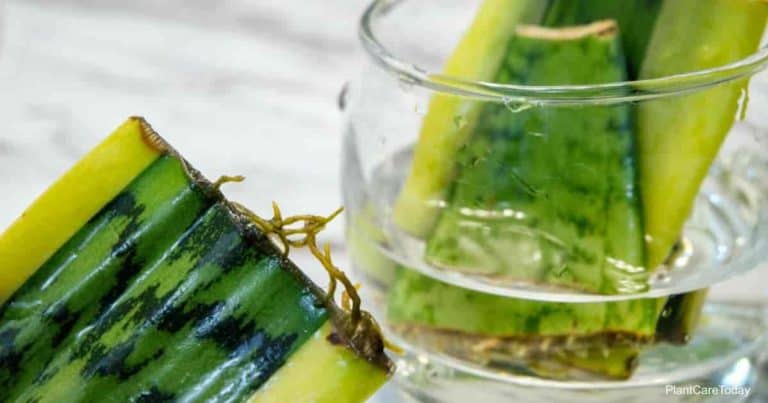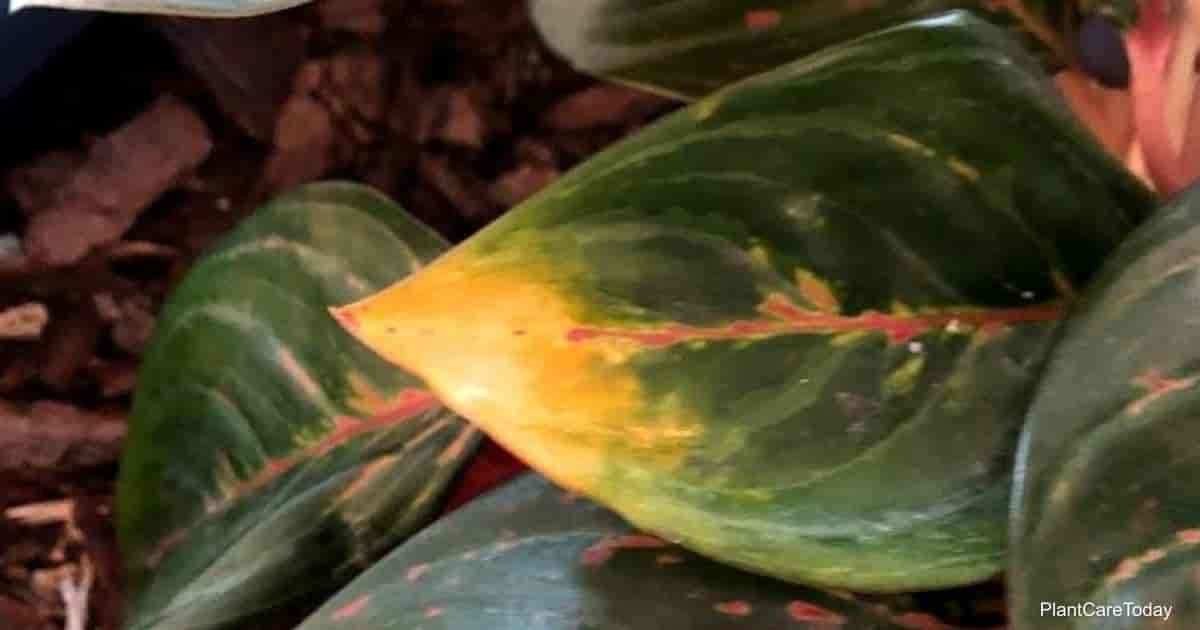- How to propagate snake plant?
- What are all the possible propagation methods?
- Which one should you choose?
These are the most frequently asked questions about snake plant propagation I often come across.
Propagating Snake Plants using cuttings in water
The snake plant or the Sansevieria trifasciata, also notoriously known by its common name Mother-in-law’s tongue, is the most tolerant and the least maintenance-seeking plant there is.
The snake plant perennial evergreen is one of my absolute favorites due to its sword-like, streaked leaves which rise up 2’ feet tall or more and form a handsome, upright, and showy display.
These beautiful houseplants are everything you could ask for:
Snake plants are versatile, drought-tolerant, low light-tolerant, do great in bright indirect light, purify the air for you, and thrive without fertilizer.
Since everyone, including forgetful owners, amateur gardeners, enthusiasts, botanists, and gardening experts, love low-maintenance snake plants for their potential as indoor and outdoor plants, an effective guide on snake plant propagation would be quite valuable and writing one would be worth it!
Overview
An easy-growing plant like snake plants requires a simple yet effective propagation guide.
Below are step-by-step instructions for propagating the snake plant in 2 different ways: by Leaf Cuttings and by Rhizomes.
Before delving into propagating methods, there are a few things that you must keep in mind.
Sansevieria plants might not bother you much with their lighting and humidity needs, but they are a bit particular when it comes to watering.
Like almost every other cacti succulent, when it comes to water, snake plants believe “too much of a good thing is harmful”.
Watering the plant excessively can lead to root rot and eventually kill the plant.
However, propagating snake plants in the water is a promising option.
Snake plant cuttings are effective, but if you want to grow a snake plant faster, the best way is to use rhizomes.
The older the snake plant, the more the rhizomes it produces.
Choose any of the propagating methods detailed below and welcome new growth.
Ways to DIY Propagate Snake Plants
#1 – Propagation by Leaf Cuttings
As the name suggests, the first method uses cuttings from one of your snake plants.
Make sure you choose cuttings (leaves) from a healthy snake plant with a solid leaf color.
Remember this method is recommended for people with patience!
Things You Need
- A pot with slightly moist, well-draining soil or a tall container with water (based on the variation you choose to use)
- A fully grown Sansevieria plant
- A sharp knife
- A pair of gloves
What to Do
- Choose a healthy leaf from the mother plant and use a clean, sharp knife or sheaths to cut a section.
- There are two things you must ensure while doing so.
- The knife should be very clean and sharp and you should cut in the direction in which the leaf has been growing.
- It is important to root the correct end of the leaf cutting as this is what determines whether your plant will grow or not.
- If you cut a bigger piece and then divided it further, you must remember the end which was facing the roots.
- Let the cutting rest for a couple of days prior to planting them so the cuts would heal properly.
- Once the cuttings are ready for rooting, choose any one of the following variations.
Variation 1: Rooting A Snake Plant In Water
- Take the tall container or vase and place the leaf in it.
- The cut-end of the leaf should face downwards.
- A good rule of thumb is to fill the container with water until one-quarter of the leaf is immersed in it.
- Place this container in part-shade, preferably at a place with indirect light.
- Change the water every couple of days.
- It could take a while but as soon as the plant grows roots, plant the snake plant cutting in the pot with slightly moist soil.
Variation 2: Rooting Cuttings in Soil
In this variation, you have to plant the leaf cutting directly to the planting pot with soil.
Insert the cut-end of the lead into slightly moist, well-draining soil.
The plant can take about 2 to 4 weeks to sprout roots and then another month or so to produce young new leaves.
#2 – Propagation of Snake Plants with Cuttings from Rhizomes
- Rhizomes, also known as root stalks, are the thick, underground parts of the snake plant with the nodes which produce roots and shoots.
- It is white in color.
- To propagate a snake plant, you need a mother plant with rhizomes.
- This method of propagating snake plants is faster and easier than the first one.
- It could be highly rewarding if you are all set to get your hands a bit dirty!
Things You Need
- At least 2 pots with fresh potting mix (number of pots depends on the number of sections you make)
- A fully grown Sansevieria plant
- A sharp knife
- A pair of gloves
What to Do
- Extract the rhizomes by digging up the mother plant from the soil or removing the plant from its pot and then gently cut through and divide them along with the roots.
- Make sure the knife or shears are clean and sharp or you’ll end up harming the healthy plant.
- Usually, the plant is divided into two parts only, but if your mother plant is old and has numerous rhizomes, make more sections.
- Once the sections are ready, let the cut leaf callous over for a several days and then replant them into separate pots to get your mother in law tongue plant.
- As an ideal practice, place three or more rhizomes attached to at least one healthy leaf for the new plant to grow.
- When repotting, repot each new section in a new pot with fresh potting medium.
Snake Plant Uses
Now you know what to do, go on and grow some baby Sansevierias.
Use them as ornamental houseplants or grow them in your garden.
Or send them as a gift to your friends and loved ones.
For snake plant care, remember to refrain from overwatering as too much water can kill your baby plants.
Credit : Gary Antosh (https://plantcaretoday.com/snake-plant-propagation.html)





